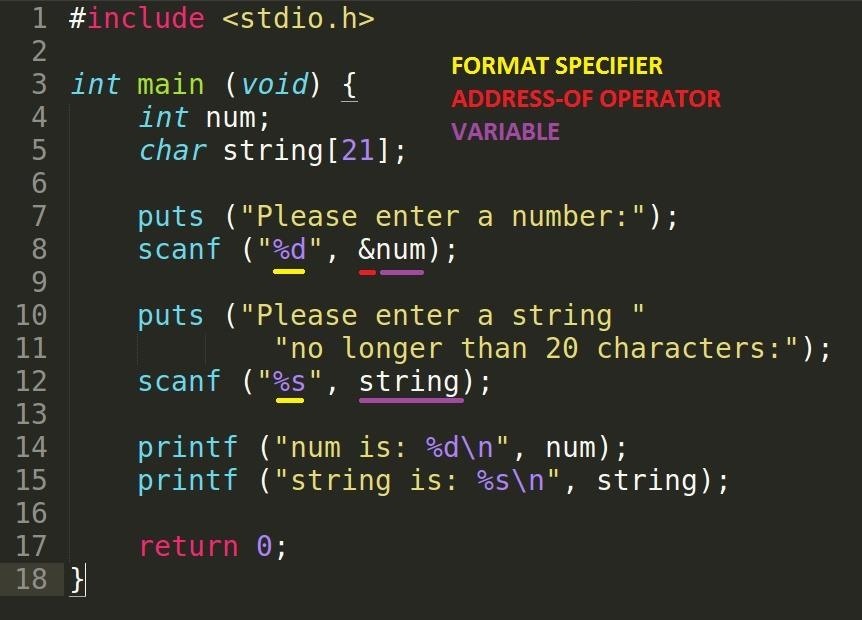

You can have one pushbutton to turn your device on using the clever setup of Tip #11 of the PIC Hardware Tips 'n Tricks, and another switch (nothing but a signal line to the PIC) tell your PIC to power itself off. There's another way to do this under certain circumstances. You have to calculate the max write time, and ensure that you have enough time between detection and losing your voltage regulation you'll need "hold-up" capacitors on the unregulated input to make sure you have enough time. It will say, ' Hey, this is being written but never read, so I can just. conjunction with either of the read or the write permissions annotations. It may not be very much time but, depending on the load and the power supply, you could possibly have enough time to do an EEPROM write or two. Listing 8-14 shows a variable that's actually a hardware register that turns. The Nullable annotation indicates a variable, parameter, or return value that. You can monitor the voltage going into a linear regulator to get some advance warning of an impending power-off condition. Life would be nice if we could foresee "when" power will fail Thatd be bad since youre retaining c to maintain the publisher subscription. If youre not reading from c, the compiler can assume that c isnt being used, and optimize it out. In answer to your question on the thread that Pepperysteve posted a link to: Lantua November 30, 2020, 12:17pm 2 Normally, you can just do c, but theres also a problem that you need to ensure that c is still alive by the completion event. You tell yourself, 'Ill fix this later' but never do and then you post it on r/badcode years later, still.
#Variable was written to but never read code
The worst you can say about Perl is that it sometimes makes it so tempting to write bad code as a quick fix. Temp_word = ( ( (uint16) (EEPROM_READ_BYTE((uint8)addr+1)) ) << 8 ) Write Once, Read Never: variable names considered harmful. Uint16 EEPROM_READ_WORD (uint16 const rom * addr) Void EEPROM_WRITE_WORD (uint16 const rom * addr, uint16 data_word)ĮEPROM_WRITE_BYTE((uint8)addr+1, (data_word>8)) wait until (possible) previous write-acces is finishedĮECON1bits.WREN = 0 // write enable bit clear Uint8 EEPROM_READ_BYTE (uint8 const rom * addr)

Do not use this with PICs with more than 256 byte eeprom, since I think it is not clear that this variable is never read, it depends on the interpretation (it is clear that it can become optimzed away but that is another. Works great on several 18fxxxx devices. Read and write eeprom data (8 and 16 bit) in a 18Fxxxx device. (char)&Emp1 is used to point at the start of an object and sizeof (Emp1) calculates the number of bytes copied in file. In this case it's almost certainly benign, but validation should catch unused variables (and probably one or more undefined references to the correctly-spelled variable since the typo was defined instead.// ********************************************************* file1.write ( (char)&Emp1, sizeof (Emp1) ) Here data present in class object Emp1 is written to file Employee.txt by calling write function. There should have been at least one use of the variable, most likely "background-image: var(-toolbar-gbimage)", if it were not a typo. > +58 references to different cases of 'rgbimage'Īpparently one of the two instances was introduced in bug 1349555 about 7 months ago. I searched for all instances of the variable as written, then a shorter substring to see if it could be related to anything other than the typo I suspected, and finally the variable I thought it should be.


Nothing to reproduce, but I found it in the Style Editor and couldn't figure out what it was for. You can safely remove weak self from the closure capture list since you are not referring to it in the closure itself, therefore the compiler warns you. To create a variable in JavaScript, use the let keyword. User Agent: Mozilla/5.0 (X11 Ubuntu Linux x86_64 rv:58.0) Gecko/20100101 Firefox/58.0 b does not count as 'unused', it is a feature - your variable may start with - then its explicitly said 'it is unused but dont complain about it please' (it is, overall, a good old practice to name unused variables like so).


 0 kommentar(er)
0 kommentar(er)
